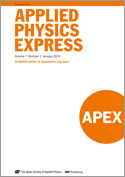
Applied Physics Express
Scope & Guideline
Connecting the Dots in Physics and Engineering
Introduction
Aims and Scopes
- Nanotechnology and Materials Science:
Research in this area covers the synthesis, characterization, and application of nanomaterials, including carbon nanotubes, graphene, and various semiconductor nanostructures. Studies often focus on enhancing properties for electronic, optical, and thermal applications. - Semiconductor Devices and Electronics:
This scope includes the development and improvement of semiconductor devices such as HEMTs, LEDs, and photodetectors, often emphasizing new materials, structures, and fabrication methods to enhance performance and efficiency. - Quantum and Spintronics:
Research involving quantum phenomena, spintronics, and related materials, exploring the applications of quantum states and spin properties in devices, such as quantum dots, spin transistors, and quantum sensors. - Optoelectronics and Photonics:
This area encompasses the development of devices that convert electrical energy into light and vice versa, including lasers, photodetectors, and optical sensors, often focusing on novel materials and structures to improve efficiency and functionality. - Acoustics and Metamaterials:
Research on acoustic metamaterials and their applications in sound manipulation, including novel designs for sound absorption, focusing, and waveguiding. - Thermoelectric Materials and Devices:
This includes the study of materials that convert temperature differences into electrical voltage and vice versa, focusing on enhancing thermoelectric efficiency through novel materials and device architectures. - Plasma Physics and Applications:
Investigations into plasma technologies and their applications in materials processing and device fabrication, including plasma-enhanced chemical vapor deposition and plasma treatment techniques.
Trending and Emerging
- Two-Dimensional Materials and Heterostructures:
Significant interest in the synthesis and application of two-dimensional materials, such as graphene and transition metal dichalcogenides, focusing on their unique properties for electronics, photonics, and energy applications. - Quantum Computing and Information Technologies:
An increase in research related to quantum technologies, including quantum computing, quantum communication, and quantum sensing, reflecting the growing importance of these fields in applied physics. - Sustainable and Green Technologies:
Emerging themes around sustainable materials, energy harvesting technologies, and environmentally friendly fabrication processes are gaining traction, aligning with global sustainability goals. - Machine Learning and AI in Materials Science:
The application of machine learning and artificial intelligence in materials discovery and optimization is becoming increasingly prevalent, indicating a trend towards integrating computational methods with experimental research. - Advanced Metamaterials and Plasmonics:
Growing interest in the design and application of advanced metamaterials and plasmonic structures for manipulating electromagnetic waves, with applications ranging from sensing to imaging. - Integrated Photonics and Quantum Dots:
A rise in research focusing on integrated photonic devices, particularly those utilizing quantum dots for enhanced optical properties and functionalities.
Declining or Waning
- Traditional Semiconductor Fabrication Techniques:
There is a gradual decline in papers focusing on conventional semiconductor fabrication methods as research increasingly favors advanced techniques such as 2D material integration and novel nanofabrication approaches. - Basic Theoretical Studies without Experimental Validation:
A noticeable decrease in purely theoretical papers that do not include experimental validation or application, as the journal emphasizes research that bridges theory with practical applications. - Low-Power Electronics:
Research focused on low-power electronics has waned, likely due to a shift towards high-performance and high-efficiency devices that operate at higher power levels, particularly in the context of IoT and advanced computing.
Similar Journals
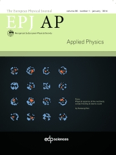
EUROPEAN PHYSICAL JOURNAL-APPLIED PHYSICS
Fostering Collaboration in Cutting-edge ResearchEUROPEAN PHYSICAL JOURNAL-APPLIED PHYSICS, published by EDP SCIENCES S A in France, serves as a vital platform for the dissemination of cutting-edge research in the fields of condensed matter physics, electronic, optical and magnetic materials, and instrumentation. With an ISSN of 1286-0042 and E-ISSN of 1286-0050, this journal has been a valuable resource for researchers since its inception in 1998, aiming to foster innovation and dialogue among professionals and academics alike. Featuring an impact factor that reflects its growing influence, the journal is currently ranked in the Q4 quartile for several related categories in 2023, underscoring its ongoing contributions to the scientific community despite its relatively competitive positioning. Access to the journal is available through various Open Access options, ensuring that pioneering research is readily accessible to all. As it continues to evolve towards its 2024 objectives, EUROPEAN PHYSICAL JOURNAL-APPLIED PHYSICS remains dedicated to advancing knowledge and facilitating collaboration in applied physics, making it an essential resource for students, researchers, and professionals dedicated to exploring the forefront of physical sciences.
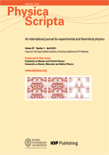
PHYSICA SCRIPTA
Fostering Collaboration for a Brighter Scientific FuturePHYSICA SCRIPTA, established in 1970 and published by IOP Publishing Ltd, is a prestigious journal dedicated to the broad fields of physics, encompassing topics such as atomic and molecular physics, condensed matter physics, and mathematical physics. With an impressive commitment to advancing scientific knowledge, it holds a significant standing in the academic community, evidenced by its Q2 and Q3 rankings across various categories in 2023. The journal is instrumental for researchers, professionals, and students seeking to disseminate and engage with high-quality research, fostering collaboration and innovation within the field. Although it currently does not offer open access options, its robust editorial standards ensure the dissemination of impactful studies, contributing to its rising citation metrics. Published from the United Kingdom, PHYSICA SCRIPTA continues to be a vital resource for contemporary developments in physics, paving the way for future discoveries.
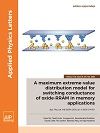
APPLIED PHYSICS LETTERS
Connecting Theory and Experiment in Physics.Applied Physics Letters, published by AIP Publishing, is a premier journal dedicated to the rapid dissemination of research in the dynamic field of applied physics. With an ISSN of 0003-6951 and an E-ISSN of 1077-3118, the journal has carved a niche for itself since its inception in 1962, serving as a vital forum for the exchange of innovative ideas and experimental findings. As of 2023, it proudly holds a Q1 ranking in the category of Physics and Astronomy (miscellaneous), standing at rank 11 out of 81 in Scopus, reflecting its influential role in advancing scientific knowledge with an impressive 87th percentile. The journal significantly contributes to the academic community by providing an accessible platform for both groundbreaking theoretical and applied research. Researchers and professionals alike benefit from its rigorous peer-review process and timely publication, fostering collaboration and dialogue among experts in the field. While the journal currently operates under a subscription model, its comprehensive scope encourages submissions covering all aspects of applied physics, making it an essential resource for researchers and students eager to stay at the forefront of this ever-evolving discipline.
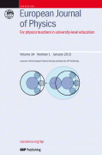
EUROPEAN JOURNAL OF PHYSICS
Unveiling Innovative Research in PhysicsEuropean Journal of Physics, published by IOP Publishing Ltd, is a premier international journal serving the diverse field of physics and astronomy. With a commitment to advancing scientific knowledge since its inception in 1980, the journal provides a platform for original research articles, reviews, and topical discussions in various domains, including theoretical and experimental physics. Operating out of the United Kingdom, the journal has achieved a commendable Q2 ranking in the Physics and Astronomy (miscellaneous) category for 2023, reflecting its robust influence in the academic community, alongside a notable Scopus Rank that underscores its relevance in both the Social Sciences and General Physics and Astronomy fields. Although it does not currently offer open access, the journal's traditional publication model ensures rigorous peer review, maintaining high scholarly standards that are imperative for researchers, professionals, and students striving to stay ahead in their respective fields. Don't miss the opportunity to engage with cutting-edge research and contribute to the ongoing dialogue in physics by accessing this vital resource.

Applied Science and Convergence Technology
Pioneering Research for a Convergent FutureApplied Science and Convergence Technology (ISSN: 2288-6559) is a premier academic journal published by the Korean Vacuum Society, dedicated to advancing knowledge in the intersecting fields of condensed matter physics, electrical and electronic engineering, materials science, and theoretical chemistry. Based in South Korea, this journal serves as an essential platform for researchers, professionals, and students seeking to explore innovative applications and methodologies that drive convergence in science and technology. With a convergence period spanning from 2019 to 2024, the journal aims to publish high-quality original research and review articles that foster collaboration and knowledge sharing across disciplines. Its current quartiles position in top categories, alongside a respectable rank in Scopus, highlights its significance within the scientific community, although it is presently classified within lower tiers. The journal's commitment to open access ensures that vital research findings are accessible to a global audience, facilitating advancements in science and technology. As a notable outlet in its field, Applied Science and Convergence Technology continues to attract contributions that not only challenge current paradigms but also pave the way for future innovations.

INDIAN JOURNAL OF PHYSICS
Fostering Knowledge Exchange in the World of PhysicsINDIAN JOURNAL OF PHYSICS, published by the Indian Association for Cultivation of Science, serves as a pivotal platform for researchers and scholars in the field of physics and astronomy. With its ISSN 0973-1458 and E-ISSN 0974-9845, this journal is committed to presenting innovative research and developments across diverse topics in physics, covering both theoretical and experimental studies. The journal has made its mark in the academic community, evidenced by its classification in the Q3 category within the Physics and Astronomy domain as of 2023, and ranks #100 out of 243 in the Scopus curated database, placing it in the 59th percentile. Spanning from 2005 to 2024, the INDIAN JOURNAL OF PHYSICS aims to foster knowledge exchange and stimulate discussions among physicists and scientific enthusiasts. Whether you are a researcher looking to publish your findings, a professional seeking updates in your field, or a student eager to explore varying aspects of physics, this journal is an invaluable resource contributing significantly to the understanding and advancement of physics in India and beyond.
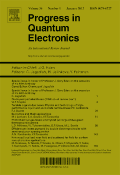
PROGRESS IN QUANTUM ELECTRONICS
Exploring the Frontiers of Quantum InnovationPROGRESS IN QUANTUM ELECTRONICS, published by PERGAMON-ELSEVIER SCIENCE LTD, is a premier international journal that serves as a critical forum for the dissemination of high-quality research in the fields of atomic and molecular physics, electrical engineering, and materials science. With its esteemed Q1 category ranking in several disciplines, including Atomic and Molecular Physics, Electrical and Electronic Engineering, and Electronic, Optical and Magnetic Materials, this journal commands a high impact factor and is recognized for its rigorous peer-review process. Established in 1969 and evolving through various phases, the journal currently compiles cutting-edge research that drives advancements in quantum technologies. Researchers, professionals, and students alike are invited to explore a wealth of knowledge and stay updated on pioneering developments in quantum electronics, enhancing their understanding and contributing to the progression of this dynamic field.

ACTA PHYSICA SINICA
Advancing the Frontiers of Physics and AstronomyACTA PHYSICA SINICA is a prominent journal published by the Chinese Physical Society, dedicated to the dissemination of groundbreaking research in the field of physics and astronomy. Established in 1993, this journal has consistently contributed to the scientific community by publishing high-quality articles that cover a wide range of topics within general physics and related disciplines. Although currently classified in Q4 of the physics and astronomy category by Scopus, ACTA PHYSICA SINICA plays an important role in fostering collaboration and communication among researchers in China and around the world. With a substantial readership, this journal is poised to remain a valuable resource for professionals, researchers, and students alike. By providing in-depth analysis and insights, it aims to advance the understanding and application of physical principles in various technological and scientific advancements. The journal is accessible via subscription, ensuring that contributors and readers can engage with the evolving landscape of physics research. For more information, visit the publisher's website.
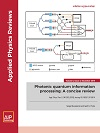
Applied Physics Reviews
Illuminating the Path of Applied Physics DiscoveriesApplied Physics Reviews, published by AIP Publishing, is a premier journal prominently positioned in the field of physics and astronomy. With an impressive impact factor that reflects its significance, this journal ranks in the 1st quartile (Q1) in 2023 and holds the 9th position out of 243 journals in General Physics and Astronomy according to Scopus, placing it in the 96th percentile of its category. Established as a vital platform for the dissemination of groundbreaking research and reviews, Applied Physics Reviews aims to bridge theoretical and experimental studies, enabling a comprehensive understanding of applied physics advancements. Although not open access, the journal provides a rich resource for researchers, professionals, and students keen on exploring the latest developments and trends within applied physics, offering insights that are crucial for both academic and industrial applications. With a converged timeline from 2014 to 2024, this journal continues to foster significant contributions to the field and encourages a collaborative dialogue among scholars and practitioners.
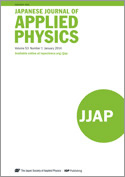
JAPANESE JOURNAL OF APPLIED PHYSICS
Pioneering Research for Practical ApplicationsThe Japanese Journal of Applied Physics is a premier publication in the field of applied physics, offering a platform for researchers and professionals to present their findings and innovations. Published by IOP Publishing Ltd, this esteemed journal has been active since 1963 and continues to contribute significantly to the understanding and advancement of applied physics across diverse applications. The journal is recognized for its rigorous peer-review process and high-quality publications, evidenced by its 2023 ranking of Q2 in Engineering (Miscellaneous) and Q3 in Physics and Astronomy (Miscellaneous). With an accessible ISSN of 0021-4922 and E-ISSN 1347-4065, the journal cultivates a global readership, fostering collaboration and innovation within the scientific community. Although the journal does not currently offer open access options, its valuable insights into the latest technological advancements and theoretical developments remain crucial for students, researchers, and industry professionals alike. By bridging the gap between fundamental physics and practical applications, the Japanese Journal of Applied Physics plays a vital role in shaping the future of applied sciences in Japan and beyond.